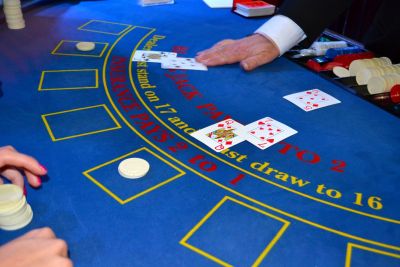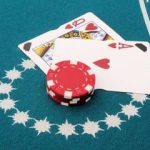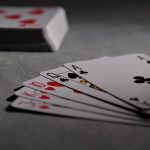Understanding the House Edge in Blackjack

By James Henley.
Why does the casino have an edge over players in blackjack? It’s a fair question. If the outcomes of blackjack games are determined by chance, then surely the dealer and the player have an equal chance. Theoretically, there is no guaranteed way for a dealer to have a stronger-ranking hand than a player if both play by the same rules. But therein lies the caveat: blackjack rules favor the dealer. The main reason why dealers win more often than players is this: the dealer has an edge because of the so-called “double-bust” rule in blackjack.
Whether you are a new player or a seasoned blackjack pro, you will always act first. If the total value of your cards exceeds 21, you automatically lose. This is known as busting. At that point, it doesn’t matter what cards the dealer is holding – you acted first. Even if both the player and the dealer could bust simultaneously, the player automatically loses. This is how the casino has an edge over the player.
It’s a little clearer when we assess it from a different perspective. Let’s say that you have a 10+7 in your hand and the dealer is holding a Queen+7. Both player and dealer have a hand value of 17. If the dealer draws to 16 and stands on 17 and above, it’s a push. Now suppose that we have a hand value of 22 for the player and the dealer. In this scenario, the player loses and that’s it. We can calculate the probability of busting. Its 28% for the player and the dealer. To determine the probability of a double bust, we multiply the player probability by the dealer probability and we get 8%.
Fun Fact: Dealers can only Hit or Stand – they cannot Split Pairs or Double Down.
Place your Blackjack Bets Carefully
Always read the rules of the table when you play blackjack online. If given the opportunity to choose between a blackjack game that pays 3:2 or one that pays 6:5, choose the former. Blackjack is formed when you have a two-card 21. Sure, it’s possible to form a multi-card 21, but that’s not blackjack and that pays at even money. At 3:2, blackjack will pay $150 for every $100 bet. At 6:5, blackjack pays $120 for every $100 bet. Over time, this seemingly insignificant ratio can mean the world of difference to the size of your winnings, or losses.
But I digress; we should get back to the casino edge in blackjack. Let’s take a few scenarios and determine who benefits from the rules in play:
- When the player acts first and the dealer acts last, the edge goes to the dealer.
- When the dealer gets even money on blackjack and the player gets 3:2, the edge goes to the player.
- When the player decides when to hit, stand, double, split, or take insurance, and the dealer must hit on 16 and stand on 17, the edge goes to the player.
- When a player can split pairs and the dealer cannot split pairs, the edge goes to the player.
- When the player is allowed to double down but the dealer isn’t, the edge goes to the player.
- When the player is allowed to surrender a hand, and the dealer isn’t, the edge goes to the player.
In all these cases, the casino has adopted sets of rules to make blackjack more player friendly. This effectively reduces the house edge and makes blackjack a beatable game. Put differently, all of these rules (as listed above) can reduce the house edge to as little as 0.5% when the player implements perfect blackjack strategy. True, the fact that players have to act first gives the casino a massive edge. That and the fact that the player doesn’t know what the dealer’s pocket card is. It’s a game of imperfect information that often plays into the dealer’s hands!





